I’ve often wondered what would have happened to me had my family not moved to Hilton Head Island, a barely known barrier island off the coast of South Carolina, in the early summer of 1975. We left the life we had known in Tuskegee, Ala., to seek a different life. A better life. A life that included sunshine and sand, tennis and golf, and a safe environment to grow and learn.
Dad had a job at the newly constructed Capin’s Pharmacy, leaving behind complicated store ownership that came with too many headaches in Tuskegee. Capin’s Pharmacy was the second drug store ever built on the island. (The original Capin’s was in Coligny Plaza.)
The new store was in Pineland Mall, which is now known as Sea Turtle Marketplace. It was the anchor, along with the Big Star grocery store, for the plaza that included shops and restaurants–the answer to shopping needs for the north end islanders.
The day we moved here, there were no traffic lights on the island. That soon changed.

Sea Pines Academy graduation, circa 1985. Dressed in white from left to right: Cyndi Boyle Barrington, Nicole Cifaldi Feeny, Margaret Crenshaw and Laura Lawton Fraser.
We found a home–a villa– in Shipyard. We thought it was cool to live in a villa after being in a large brick home back in Alabama. The pool was right outside our sliding glass door. My brother, John, and I were accepted to Sea Pines Academy, the only private school on the island. The commute to school was about 3 minutes.
It was so exciting to be the new girl at school. On that first day, Kent Bird sneered at me and made fun of my redneck Alabama accent. (His accent is way more Southern than mine now) David Pinckney nicknamed me “Miss Kentucky,” a name that lasted until my accent miraculously disappeared some years later.
There are seven kids, including Kent and David, from that first day of school who I can say are still my best friends.
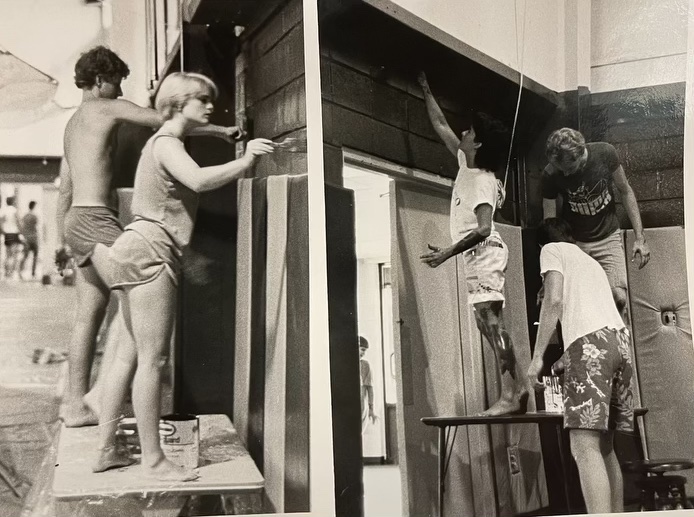
Kent Bird, Margaret Crenshaw, Laura Lawton Fraser, Pete Soens and Jay Rippeto paint the Sea Pines Academy gym (and each other) from Gator green to the new Hilton Head island Prep blue in the summer of 1985.
In our sophomore year, we dubbed ourselves “The Class With The Most Class”–which we still call ourselves. We graduated in 1985, a class of 25 students. Over the years, students came and went, reflecting the ebb and flow of the real estate market at the time.
There remains a core of 17 of those 25 graduates who are all still in touch today. We are great friends, sure, but the true thread that runs through us, and has kept our friendships alive, is the fact that the island was such a special place. Our upbringing was unique. Sea Pines Academy was a unique learning experience. I attribute my creativity to having learned there.
But I digress. Where would I be had my family not moved here? I would have never met Laura Lawton Fraser, daughter of island developer and internationally renowned founder of Sea Pines Resort, Charles E. Fraser. We would never have become best friends. I would never have spent countless hours in her home with her parents, subtly learning the unique specialness of where we live.
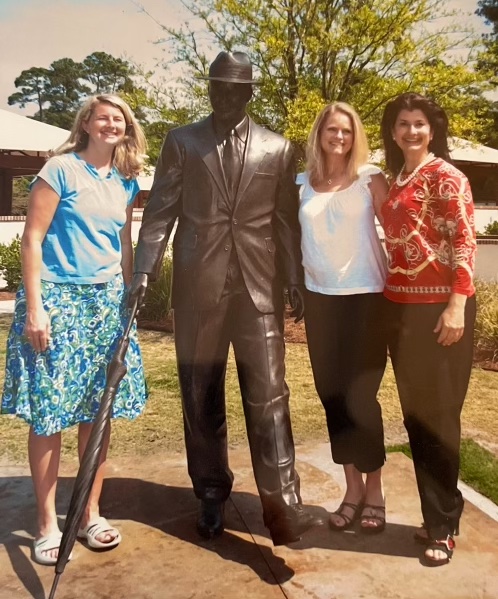
Jennifer Thompson, Margaret Crenshaw and Laura Lawton Fraser with the Charles Fraser statue at the dedication of Compass Rose Park
And that, my friends, would have been a tragedy. Because knowing Laura Lawton and her family has changed my life in ways that are so vast it is almost incomprehensible.
You might think I am being dramatic. Well, maybe just a little. I am only trying to relay to you my immense gratitude for fate. And coincidence. And all the forces that led me here–to this island.
On that first day of school at Sea Pines Academy, back in the fall of 1975, Laura Lawton welcomed me with open arms, even though Kent and David were a little more skeptical. We became fast besties. There were countless spend-the-nights. I accompanied the Fraser family on their boat, The Compass Rose, about a million times. I was invited to come to dinners and parties–entertaining LL, as she is known, so that her parents could entertain business and political dignitaries from around the world.
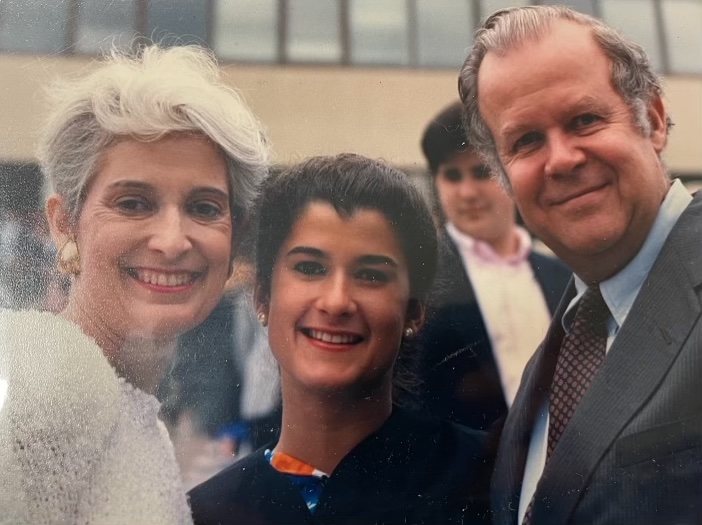
Laura Lawton Fraser with her parents Mary and Charles Fraser upon her graduation from Duke University.
The Fraser Christmas Party at their home on Magnolia Crescent in Sea Pines was the epitome of Lowcountry hospitality, complete with roasted oysters. Yes, I was there, every year. LL and I helped hoist the oysters up to the second story, over the balcony, by way of a very crude pulley system. I could go on and on, but back to the point.
Though the island is not the same as when we moved here almost 50 years ago, in my mind it is. And I want it to remain that way. At least in my mind. I can handle all the changes. No problem. Many of them have been changes for the better, changes that have made our island even greater. But I would like to share something with you that I hope will put your mind in the perspective of where we were some 50 to 60 years ago, something that should be remembered and revered.
A few years ago, I stumbled upon a writing by the brilliantly creative Charles Fraser. I shared it with Laura Lawton, thinking that she would recognize it from his archives within the Charles E. Fraser Library. I was surprised that LL had never seen this piece of his writing, as she has spent her adult life curating his extensive archive.
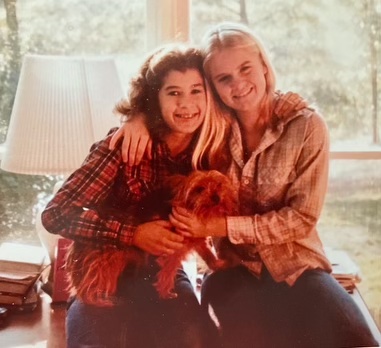
Laura Lawton Fraser, Frizzly Fraser and Margaret Crenshaw, circa 1979
It became instantly more attractive to me that the writing should be published for the here and now–as a reminder that whatever you think Hilton Head Island should be, or however the island was when you arrived, there was once a plan of true intention from the original creator of what we now know as “home.”
I am quick to add that Charles had an army of other “original” foundation layers–people from all walks of life and professions–in our community that have been a part of making the island what it is today. These folks were either encouraged by the Frasers to move here or they somehow stumbled upon the island and made the move to be a part of the dream. We could not fail to mention the families and individuals that all had a hand in making Fraser’s vision a reality.
I am well aware that anyone who has made Hilton Head their home, or second home, had their own particular “why.” I’ll bet our collective “whys” are not very different. The island’s particular ethos is a common denominator that bonds us all in a special fraternity–those who seek the characteristic culture and community that Fraser manifested in this special writing.
Read and remember the words he expresses here. They are, quite simply, his vision, which was implemented by “courage, restraint, and philosophy.” Thank you, Mr. Fraser.
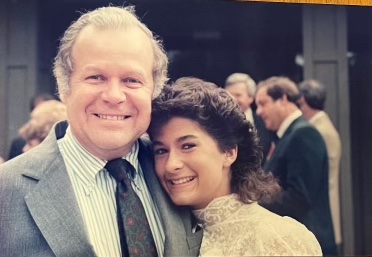
A proud Charles Fraser congratulates Laura Lawton Fraser on her graduation from Sea Pines Academy.
Where We Live
By Charles Fraser
Where we live is the maritime forest, the rural South, the Lowcountry.
We are among wild grape vines, palmettos, myrtles, and bay, sea oats and American beach grass, alligators and squirrels, sable palm and live oak, loblolly and long leaf pines. This is a seaside, marsh-surrounded, forest-covered, sub-tropical, ocean-bathed island. This is not to be an efficient, maintenance free, planned unit development.
Here the roads are deliberately and delicately curved to hold the look of the woods instead of the look and efficiency of the boulevard. The light is subdued to hold the night, to give the stars a chance to be seen, to give the owl and the human a chance to experience it. You may have to drive a bit slower and you may have to strain to see the signs but you will have gained more than you sacrificed if you will savor rather than rush, if you will meander and enjoy.
We are to refresh ourselves in the vistas and shadows. We are to enjoy the stillness that only great trees and the tallest pines can offer. We are to delight in the whimsy of brightly colored birds darting through the Spanish moss and we are to listen to the rattle of the palm shaking in the grasp of the sea breeze.
We are not here to strip out rectangles and to build pastel houses nor to decorate the dark roads in the forest with glowing paints and glittering reflectors. We would not put stark white concrete curbs where soft rural edges belong. The road edge and the drainage ditch, the intersection and the road are parts of a palette.
We do not come here for efficiency. It is not maintenance cost effectiveness that restores the heart and refreshes the mind. We are not drawn to public works but to the divine mysteries of this still largely natural sea island. We are to be artist first and engineers second. Ecology is to blend with accounting; the natural blended with the infrastructure. This is the vision and a philosophy that has brought this island to here. It takes vision, courage, restraint and philosophy to follow it.
The picture is big and it is one of a place where the spirit of man is restored by its interaction with the cosmos. It is about the refreshment of the body and mind, of rest and challenge, sports and relaxation, visually and chemically unpolluted nature along with the best facilities for relaxed dining, study, or recreation. There is to be a cherished sense of nature in the yards of finely designed homes as well as along the roadways and by ways and it is all to be laid out in the natural forest and along the waterways with finesse and sensitivity.
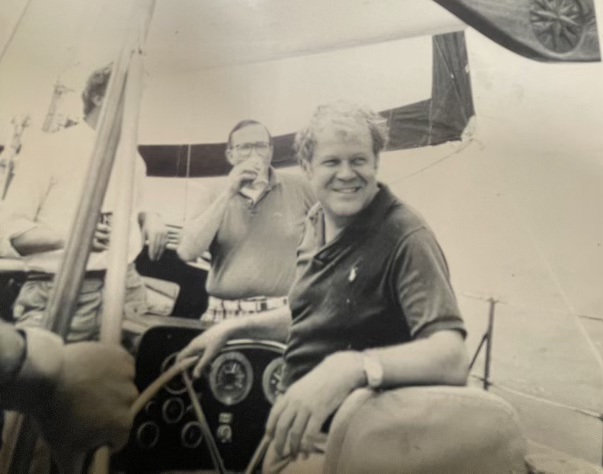
Charles Fraser sailing on his 44-foot ketch, Compass Rose

